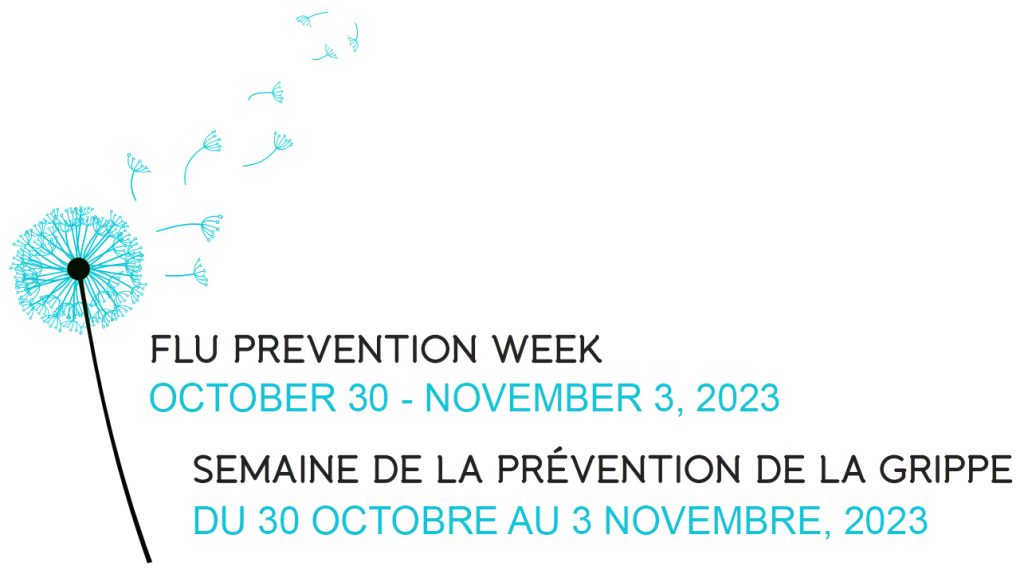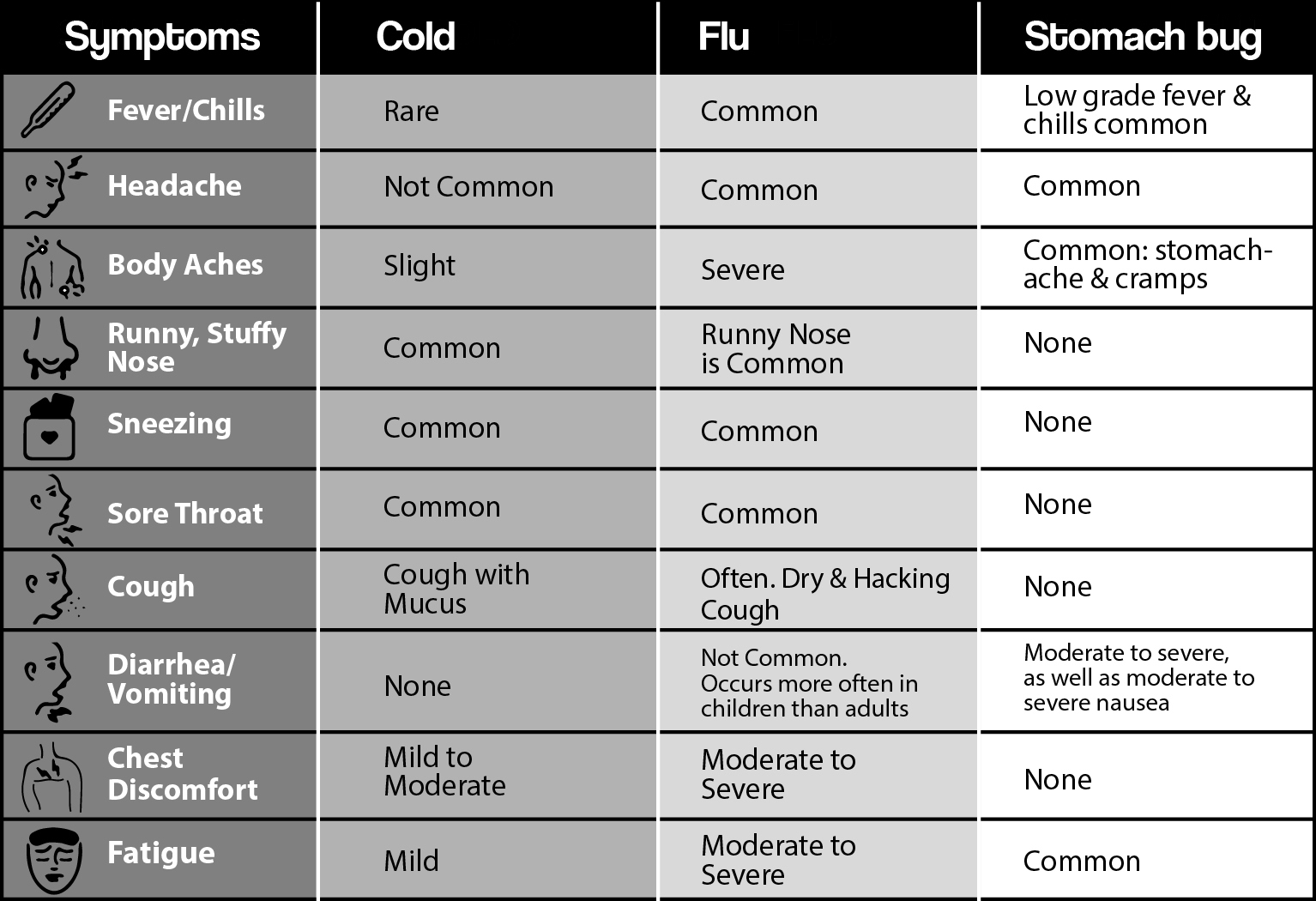
Influenza, more commonly known as the flu, is a serious respiratory illness that causes ~3500 deaths and ~12,000 hospitalizations in Canada every year. The numbers are staggering, but the flu is preventable when we all do our part. Together we can do better to protect ourselves and each other. Join us as we open up this conversation and help people prepare for the season. What steps can you take this year to reduce the risk for yourself and your community? Whose life could you save?
The flu begins circulating in the northern hemisphere in the fall, peaking twice in the winter before tapering and ending its season in the spring. During Flu Prevention Week we’ll work to help people prepare before the heaviest part of the season hits. The earlier we take measures to prevent the spread of the flu, the more effective our efforts will be, and that saves lives. Flu prevention isn’t a personal choice, but a public one. What do we mean by that? We’re all in this together and we need everyone to help reduce the risk to themselves and to everyone around them. We need you. Start here to learn more about the flu and flu prevention, and find out how you can make a difference in someone’s life this year.
-
- What is the flu?
- How can we prevent it?
- Are there ways to make flu shots easier for my kids?
- How can I help spread the word? – Free printables available here!
Join us. Together we can save lives this flu season. For Jude, For Everyone.
What is the flu?
People are often confused about what the flu really is. Many believe it to be a bad cold, while others think it’s a stomach bug. Recognizing your symptoms can help you understand what your body is fighting.

The flu is contagious and can spread up to 6′ away in conversation. While we might not worry about prevention for our own safety, taking steps to stay healthy can stop the spread to someone who might not be able to recover.
Who is most affected?
The flu affects everyone, and even young, healthy adults can suffer the most serious consequences, but some groups are more vulnerable. Those who are at highest risk of death and hospitalization include:
- Children under 5
- Adults over 65
- Pregnant women
- People with underlying health conditions like asthma, heart disease, diabetes, or cancer
- Indigenous peoples
Prevention
The flu is miserable, time-consuming, and fatal to thousands of Canadians every year. Everyone who gets the flu gets it from someone else, and the choices we make will impact the risk we pose on everyone around us. No one prevention method is a guarantee, but when practiced together you’ll greatly reduce your chance of contracting and spreading the flu each year.
The flu is also a significant burden on our healthcare system, causing ~12,500 hospitalizations in Canada every year. With each hospitalization costing an average of $14,000, and the additional cost of visits to urgent care and family doctors, we’re spending millions treating a preventable illness. We’re also adding to the problem of hallway medicine by increasing the strain we put on our hospitals
Many of us don’t realize how serious this seasonal disease is to our population, but with awareness and care we can protect lives and save resources for unavoidable health spending.
Use our flu shot locator to help find the location closest to you.

Print this! Keep these tips handy and share them in your community.
doesn’t have to hurt

Vaccines can be stressful for kids of all ages, and that can sometimes make parents hesitant to take them for their annual flu shot. But there ways to reduce the anxiety and pain for children and babies while we give them the protection they need during flu season. Try these tips to help your kids be more comfortable during their vaccinations. Remember that your kids will take their cues from you, and if you’re stressed, they’ll feel stressed.
Babies:
- If you’re breastfeeding, nursing during and after the vaccination can help reduce pain naturally. Feeding immediately after can help your baby switch focus quickly from ‘pain’ to ‘food’.
- A sweet tasting solution (sugar water) can help a baby (particularly under six months) who isn’t nursing at all or at the time of the shot. If your baby uses a pacifier try dipping it in the solution and giving it just before the shot.
- Hold your baby close and in an upright position.
- Distract your baby with a favourite toy or noisemaker.
- Your doctor may have a numbing spray or cream available. Ask if this is an option.
Kids:
- Avoid talking about shots in advance, as it gives them time to worry and can make it more stressful.
- Be honest with them. Don’t tell them it won’t hurt. Instead, prepare them by managing their expectations. Tell them it might hurt at first for a few minutes, and then it will start to feel better.
- Tell them this is a shot to help keep them healthy. It might hurt for a minute, but it can keep them from feeling really sick later, and it can also help them protect other people around them. Their flu shot can save someone’s life, and that makes them a hero.
- A numbing spray or cream may be available.
- Slow, deep breaths during the shot can help reduce pain.
- Distraction – a video on a device can take their mind off what’s happening.
- Rewards can be helpful with kids. Knowing there’s something after, even as simple as a sticker or a lollipop, can be help them get through. Vaccination day is always ice cream day in our house.
spread the word
Every time we have a conversation about flu prevention we have the opportunity to save someone’s life. Here’s how you can help:
When you get your flu shot, take a picture and post it to social media. Use the hashtags #flushot and #forjudeforeveryone, and tell us why you’re getting your shot. Do you have an elderly relative? Are you pregnant? Do you have young kids at home? Is someone in your family sick? Do you have a job that you can’t afford to take time away from because of illness? Or are you getting it because having the flu is awful, and you don’t want to risk passing it on to anyone else? Let us know! We’d love to hear your story, and your post can remind someone else in your life that it’s time to get their own shot, and encourage them to think about who they want to protect, or why they can’t afford to get the flu. Your post can save someone’s life.
Flu shot sign
Print this sign to share who your shot is for this year! When we participate we aren’t only protecting ourselves, but everyone around us.

If you or someone in your life is high-risk, ask others to take precautions. Do you have a newborn? Do you or does someone you love have cancer or a heart condition? Does someone in your family have asthma or diabetes? Ask visitors to practice flu prevention, including getting their flu shot, washing hands frequently during visits, and avoiding visits if they know they’re ill and could be contagious. High-risk people are much more vulnerable to the most serious effects of the flu, including hospitalization and death.
Follow us on social media, and help by sharing our posts! Find us on Facebook, Instagram, and Twitter. Some of the main reasons people report missing their flu shots are a) forgetfulness and b) not realizing how serious the flu can be for themselves and those around them. The more often we see visual reminders, the more likely we are to remember to take action and take it seriously. You can help your friends and family protect themselves and others by sharing on social media.
Print our printables! We’re glad to make these available to you to share in your schools, workplaces, doctor’s offices, and wherever you’re able to post them.
Fact Sheet PDF – CANADA
Fact Sheet PDF – USA

Whose life could you save? – School poster

Whose life could you save? – Hand washing/baby toes

Whose life could you save? – Elevator poster

Whose life could you save? – Train poster

